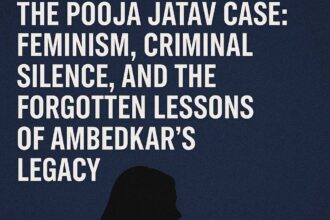
Panaji | The News Drill — In a sharp rebuke that has rocked Goa’s administrative and political corridors, the Bombay High Court at Goa slammed the state government and police authorities for their persistent inaction against rampant illegal sand mining. The court’s remarks came during a hearing on a contempt petition filed by the Goa River Sand Protectors Network, citing the government’s failure to enforce earlier directives on curbing sand extraction.
“This is not mere negligence it is complicity,” observed the court, pulling up the Director General of Police (DGP) and the Chief Secretary for failing to stop illegal sand mining operations across the state.
Court Directs Immediate Action, Demands Accountability
The court directed the state to establish a swift response mechanism for police intervention upon reports of illegal sand extraction. It also ordered the government to submit a detailed action plan including deployment of boats, drones, and police patrols particularly in mining hotspots such as:
- Bicholim
- Ponda
- Tiswadi
- Pernem
- Amona
- Virdi
- Naibag
- Khandepur
- Agarwada
Visual Proof and Public Outrage Mounting
Several images and videos submitted to the court showcased heavy equipment and truck convoys engaged in illegal mining, often just a few kilometers from local police stations.
“The sand mafia has become stronger than the state,” said an advocate representing the Goa River Sand Protectors Network.
Public anger is growing, with residents of riverbank villages alleging environmental devastation, falling groundwater levels, and erosion of fertile land.
Illegal Sand Mining in Goa?
Illegal sand mining involves unlicensed extraction of sand from riverbeds and coastal areas. In Goa, it’s often conducted at night using:
- Excavators and suction pumps
- Small barges or boats
- Trucks operating without transport permits
Despite multiple court orders, government resolutions, and even police circulars, the mafia has operated with impunity.
The Police–Politician–Mafia Nexus
According to activists and court submissions, illegal sand mining in Goa is protected by a well entrenched nexus involving:
| Entity | Role |
|---|---|
| Local Politicians | Allegedly shield illegal operators and receive kickbacks |
| Police Officials | Often ignore complaints or delay response |
| Revenue Officers (Mamlatdars) | Fail to take action or issue weak notices |
| Contractors & Transporters | Use political patronage to evade enforcement |
The Bombay HC has issued show cause notices to several Mamlatdars (local revenue officers) for dereliction of duty, and the state has transferred police inspectors from affected areas.
Environmental Devastation
Environmentalists warn that illegal sand mining is causing irreversible damage to Goa’s fragile river ecosystems. Key impacts include:
- Riverbank erosion
- Decline in fish breeding grounds
- Falling water tables
- Siltation affecting water flow
- Destruction of mangroves and riparian biodiversity
Not Just Sand: Goa’s Troubled Mining History
Illegal sand mining is only the latest chapter in Goa’s long history of mining related controversies.
The ₹35,000 Crore Iron Ore Scam
Between 2005 and 2012, Goa witnessed one of India’s largest mining scams. The Justice M. B. Shah Commission uncovered that over ₹35,000 crore worth of iron ore was illegally extracted and exported, without proper licenses or environmental clearance.
Key features of the scam included:
- Over export beyond permissible limits
- Mining in forest areas without clearance
- Export of ore through fake permits
- Political cover from successive governments
Cases Against Ministers
Prominent politicians, including former Chief Minister Digambar Kamat and Mines Minister Rohan Khaunte, were investigated. However, most of the cases have either been stalled or quietly closed over time.
Goenchi Mati Movement: A Push for Mining Justice
The Goenchi Mati Movement, led by the Goa Foundation, has long advocated for:
- Treating minerals as public commons
- Creating a permanent mineral wealth fund
- Sharing benefits with citizens as mineral dividends
- Banning illegal mining and increasing transparency
The group has called the current state of affairs “a looting of future generations.”
Failure of Governance & SIT Collapse
In 2013, a Special Investigation Team (SIT) was formed to probe illegal mining. A decade later:
- 4 out of 5 SIT members have been transferred
- No major arrests or convictions have occurred
- Investigations have stalled despite HC urgings
“This is a collapse of state machinery and a betrayal of public trust,” noted environmentalist Claude Alvares.
Court Suggests Use of Drones, Night Raids
To curb illegal sand mining, the Bombay HC has asked the Goa government to:
- Conduct surprise night raids
- Monitor riverbeds using drones
- Install GPS in trucks transporting sand
- Require real time reporting by Mamlatdars and police
- Punish officials for non-enforcement
Citizens Demand Transparency and Justice.
Summary of Court Directives
| Directive | Description |
|---|---|
| Action Plan | Time-bound mechanism for police response |
| Personnel Accountability | Show-cause notices to Mamlatdars |
| Equipment Use | Drones, patrol boats, night raids |
| Weekly Reporting | Updates from districts on enforcement |
| Public Transparency | State asked to publish steps taken online |
Conclusion
The Bombay High Court’s strong words against the Goa government and police highlight the deep rooted failure of governance in tackling illegal sand mining. With environmental consequences mounting and citizen frustration growing, all eyes are now on whether the government will act or if the mafia politician nexus will continue to operate unchecked.
As Goa struggles to preserve its natural heritage, the broader question remains: Will justice ever reach the riverbanks?
Stay connected with The News Drill for more updates.















